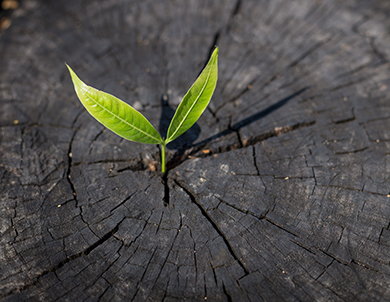Microplastics in the atmosphere might encourage the formation of clouds.
Two studies are revealing this new way plastics are changing our world, as negotiators work on a new treaty to control the material.

The researchers behind the Japanese study took samples of clouds passing over the top of Mt Fuji. Image © Kriangkrai Chiangka/Shutterstock.
Microplastics in the atmosphere might encourage the formation of clouds.
Two studies are revealing this new way plastics are changing our world, as negotiators work on a new treaty to control the material.
Plastics don’t just affect the health of wildlife – they might also influence the weather.
Recent research high in the mountains of eastern Asia found that minute particles known as microplastics are being carried along by clouds. As they float through the atmosphere, the tiny pieces of polymers are being chemically altered, improving their ability to encourage cloud formation.
While the exact effects of microplastics on the weather are not well understood, the researchers have raised concerns about the potential impacts they could have.
Professor Hiroshi Okochi, the lead author of one of the papers, says, ‘Microplastics are transported in the atmosphere and contribute to global pollution. If the issue of plastic air pollution is not addressed proactively, climate change and ecological risks may become a reality, causing irreversible and serious environmental damage in the future.’
The findings of the studies, published in Environmental Science & Technology Letters and Environmental Chemistry Letters, come amid new negotiations for a global plastics treaty. Only by getting a firmer grip on the production and disposal of plastics will the world begin to be able to start reducing levels of these ever-present polymers.
Sheila Aggarwal-Khan, Director of United Nations Environment Programme’s Industry and Economy Division, adds, ‘The ongoing negotiation for an international legally binding instrument is a chance to agree the rules, measures, and incentives for an enabling environment to end plastic pollution.’
‘Governments, businesses, and all relevant stakeholders must act with unity to ensure we do not miss this historic opportunity.’

The direction of air currents towards China's Mt Tai was used to show where the microplastics in the samples may have come from. Image © Fulin Dong/Shutterstock.
Since their origins at the turn of the twentieth century, plastic pollution has touched every corner of our planet. By 2017, more than eight billion tonnes of plastic had been produced, a figure that is only ever increasing.
About 60% of all plastics have ended up as waste, accumulating in the world’s landfills, clogging up our waterways, and being consumed by wildlife. Plastic has even been found in the Mariana Trench, the deepest point on Earth, and littering the beaches of some of the world’s remotest islands.
Much of this is inorganic, synthetic plastic cannot easily be broken down. Instead, the material fragments into increasingly smaller pieces. When these pieces are smaller than five millimetres in size, then they are known as microplastics.
These have been found in our blood and organs, though the possible health effects remain uncertain. It is known that they do pose a risk to wildlife, however, with microplastics linked to illness-causing bacteria in seabirds and digestive issues in crustaceans.
Now two recent studies suggest that microplastics may have become so ubiquitous thanks, in part, to the weather. Both studies collected cloud water from mountain summits, and then tracked where the clouds had originated.
The Chinese and Japanese research teams both found microplastics suspended in the clouds thought to have come from our emissions or been carried up from the sea’s surface. These tend to end up in lower and denser clouds, which contain more microplastics than others.
But the longer the microplastics stay in the atmosphere, their cloud-forming ability can be enhanced.
Reactions with air pollution and UV radiation can cause the particles to become more hydrophilic, attracting water to them more easily. This can also make them better at attracting other pollutants like heavy metals and so spreading them further around the planet.
Eventually, the microplastics will fall out of the atmosphere, ready to journey into the sky once more.

While their exact role in weather remains relatively uncertain, the researchers have called for deeper investigations into airbourne microplastics. Image © Wojciech Wrzesien/Shutterstock.
In light of the increasing impact plastic is having on our world, 175 countries voted in 2022 to begin work on a new treaty to control the production and disposal of the material.
With the United Nations hoping for the treaty to be finalised by 2024, the clock is ticking for negotiators. They are currently poring over a ‘zero draft’, a document which summarises a variety of different options for how the treaty could look.
Already, divisions have opened up between countries on what approach is best.
While some nations have called for a binding treaty to reduce the production of new plastics, this has gone down poorly with oil and plastic producers. Instead, they want the treaty to focus on waste management and making plastics more recyclable.
At present, only around 600 million tonnes has been recycled, and just 60 million tonnes has been recycled more than once. Meanwhile, the amount of plastic in the world almost doubled between 2004 and 2017, with 3.9 billion tonnes of new material produced in just 13 years.
In light of these stark figures, the chair of the body putting the treaty together, Jyoti Mathur-Filipp, has called for the world to move from throwing plastic away to reusing it. She argues that only by tackling the production of plastics at its source and finding non-plastic alternatives can plastic pollution be brought under control.
Whether or not the treaty will reflect this is yet to be decided. If all goes to plan the final draft will be agreed before the end of 2024, and the world can start working towards cleaning up our plastic problem.

We're working towards a future where both people and the planet thrive.
Hear from scientists studying human impact and change in the natural world.
Don't miss a thing
Receive email updates about our news, science, exhibitions, events, products, services and fundraising activities. We may occasionally include third-party content from our corporate partners and other museums. We will not share your personal details with these third parties. You must be over the age of 13. Privacy notice.
Follow us on social media